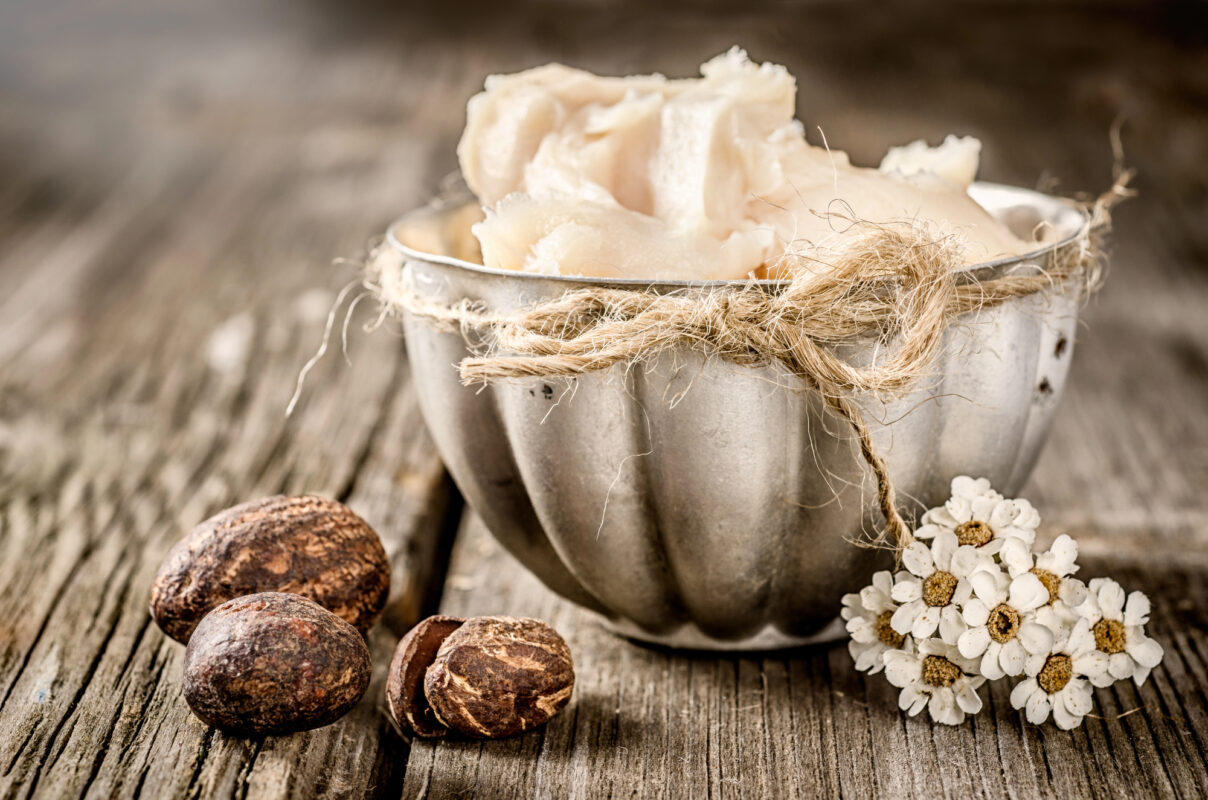Shea Butter Benefits: My Go-To Natural Skincare

There’s a little jar that always sits on my dresser, golden, buttery, and just waiting to be used. If you’ve ever tried real shea butter, you know exactly what I mean. It smells earthy and nutty, melts in your hands, and somehow works magic on your skin.
I’ve been using shea butter for years, and even now in my 70s, it’s my go-to for keeping my skin soft, hydrated, and happy.
Why I Use Shea Butter
Our skin changes as we age. It gets drier, thinner, and sometimes a little temperamental. I’ve tried fancy creams, but I always come back to raw shea butter. The benefits? Hydration, nourishment, and soothing irritated skin, and all from something completely natural.
For me, it’s more than theory. When I’m in Africa during the dry season, my forearms sometimes get sunburned and itchy. I rub a little shea butter on, and it melts into my skin, calming the irritation and soothing the rash. During cold winter months in the U.S., my lips get chapped. A tiny dab of shea butter keeps them soft all day. And when my knees ache from arthritis, massaging a bit deeply into the sore spots helps me get back to walking comfortably.
I even keep a small tin in my bag to dab on my hands throughout the day. It’s like a little portable hug for my skin.
Raw vs. Refined Shea Butter
Not all shea butter is created equal. Many commercial products use refined shea butter, which removes the scent, color, and, unfortunately, some of the nutrients that make it so valuable. Unrefined shea butter, the kind I use, keeps all the vitamins, fatty acids, and anti-inflammatory properties intact.
It usually comes in shades of yellow or ivory, with a nutty aroma. It melts with the warmth of your hands, absorbs easily, and leaves skin soft, never greasy. Refined versions are bright white, often odorless, and sometimes have preservatives or added fragrances. They look good on a shelf but, in my opinion, lose much of the natural goodness.
Women’s cooperatives in West Africa have been producing raw shea butter for generations. Using it connects you not just to your own skin’s health but to tradition and communities around the world.
Everyday Uses
Here’s how I use shea butter daily:
- Forearms and legs: Soothes sunburn and dry patches.
- Chapped lips: Winter or dry season, a dab keeps them soft.
- Feet and heels: Perfect for dry spots that need a little extra love.
- Knees: Massage in when they ache, it helps with swelling and stiffness.
- Hands: Tiny tin in my purse for on-the-go hydration.
It’s solid at room temperature but softens quickly in your hands. A little goes a long way, and once it’s absorbed, it leaves the skin supple and smooth. You don’t need to keep reapplying every hour like some lotions with lots of added water.
Why Raw Shea Butter Works
Raw shea butter is packed with vitamins A and E, fatty acids, and anti-inflammatory properties. It protects, moisturizes, and helps heal minor cuts, rashes, or irritated skin. For aging skin that produces less natural oil, it’s a simple, natural way to stay supple and hydrated.
Some people don’t love the earthy scent. I do. It fades quickly and feels so much better than absorbing extra chemicals or synthetic fragrances.
A Simple, Natural Luxury
Using raw shea butter isn’t just good for the skin, it’s good for the soul. It’s a small, natural luxury that connects you to centuries of tradition. One jar lasts a long time, and a little goes a long way. I buy mine in bulk when I travel to Ghana and divide it into small tins for easy use every day.
If you’ve never tried it, consider adding raw shea butter to your routine. Experience the natural benefits for soft, hydrated, healthy skin, and maybe a little peace of mind knowing it’s simple, natural, and authentic.
Check out my Mary’s Picks page for my favorite source of pure, unrefined shea butter. And for more details on the benefits of shea butter, here’s a Cleveland Clinic article you might find interesting.



